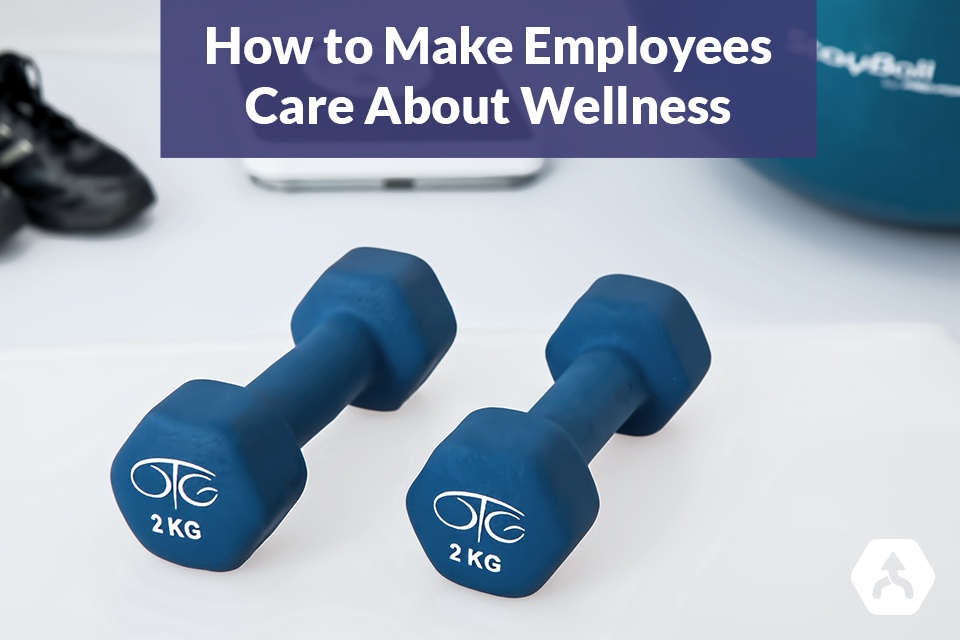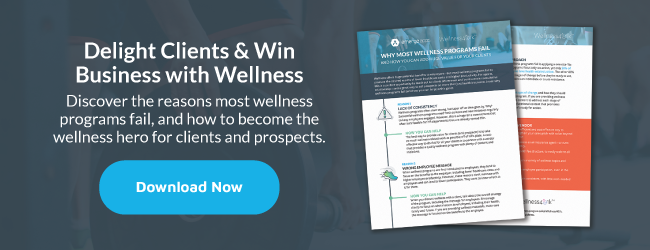
One of the biggest reasons that most wellness programs fail is lack of employee engagement. If the majority of employees don’t engage with wellness programming, the employer won’t reap any wellness benefits. However, if employees aren’t engaging, it doesn’t necessarily mean they aren’t interested in their health. Often, the message isn’t a compelling one or wellness content doesn’t apply to most employees.
In this blog, learn how to help clients boost wellness interest and engagement. Why does this matter to you as an agent? Workplace wellness offers employers the huge potential benefit of reducing employee health risks and improving employee health (which can lead to reduced healthcare costs, improved productivity, and more). When you help a client’s wellness program succeed, you are providing tremendous value as their agent.
Focus on the benefits to the employee
Many wellness programs lose employee interest right from the start, with the wrong messaging around the program. Such programs focus on the benefits to the employer: lower healthcare costs, increased productivity, etc. But employees don’t care about these benefits, so they tune out the wellness messaging completely.
Instead, employers should focus their wellness messaging on what matters to employees: their health, family, and future. Even if health isn’t an immediate concern for some employees, employers can still appeal many of them by focusing on the benefits of good health, such as more time spent with family, ability to do more activities, more mobility and fewer health problems as they age, and more.
Reach employees where they are
The other misstep that many wellness program make is by assuming the same wellness content and initiatives can apply to all employees. The problem is that each employee has unique health risks and is in a different place regarding wellness. Some may be ready to take action to improve their health, while others may not be ready to make changes or may be unaware of their poor health habits.
That’s why it’s important for employers to incorporate a variety of health topics into their wellness programming, as well as consider the stages of change. Up to 80% of employees will not be ready for action, so content must also include awareness and encouragement.
Approach it from a different angle
Finally, you might advise your clients to approach the wellness conversation a little differently from traditional wellness programs. For instance, Emerge Apps’ wellness program, Wellness401k, encourages employees to think of their health like a bank account in which they make deposits and withdrawals.
The idea is that no one has perfectly healthy habits all the time, and it’s hard to change behaviors that are ingrained (such as drinking soda or a sedentary lifestyle). So whenever an employee makes a smart health choice or takes a positive health action, they are putting a deposit into their imagined “Wellness401k” account. Negative health choices or actions function as a withdrawal.
This concept resonates extremely well with employees, as they feel that they don’t have to be perfect and even small changes can make a big difference. The goal should be to have more deposits than withdrawals, in other words more healthy than unhealthy choices.
Next steps for agents
Use these strategies and suggestions as a reason to meet with your clients throughout the year. Start with clients who have existing wellness programs or have expressed interest in wellness. You can help them start from scratch or improve their existing programming.
If you want to take it a step further, consider offering a wellness solution as a value-add to clients. Make sure the solution provides a variety of content relative to different health topics and stages of change. In addition to providing value to your clients, a wellness program can also strengthen your prospecting pitch, allowing you to win business outside of just insurance.
Want to learn more about how you can support clients’ (and prospects’) wellness initiatives? Download this free educational guide today.

